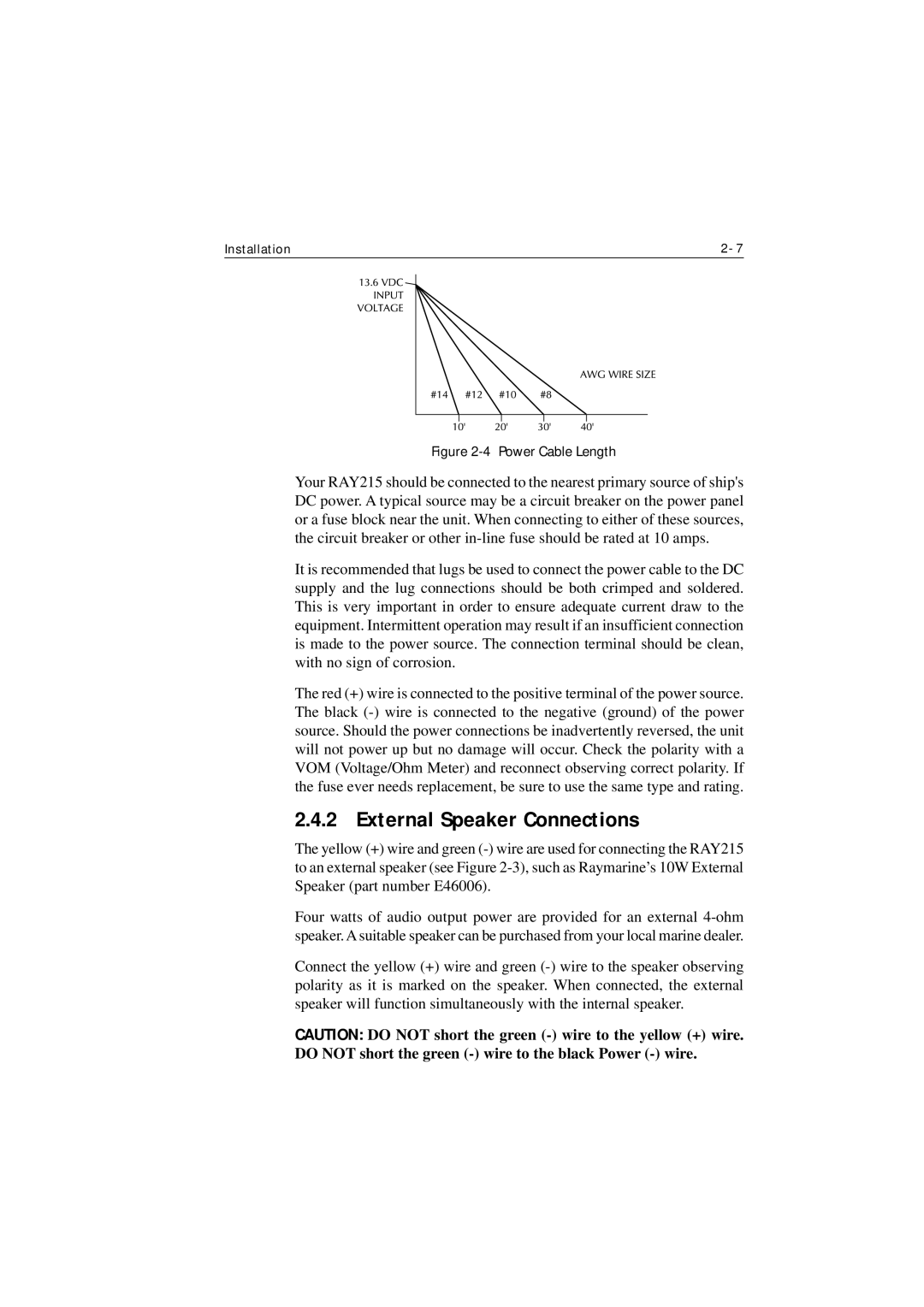
Installation |
Figure 2-4 Power Cable Length
Your RAY215 should be connected to the nearest primary source of ship's DC power. A typical source may be a circuit breaker on the power panel or a fuse block near the unit. When connecting to either of these sources, the circuit breaker or other
It is recommended that lugs be used to connect the power cable to the DC supply and the lug connections should be both crimped and soldered. This is very important in order to ensure adequate current draw to the equipment. Intermittent operation may result if an insufficient connection is made to the power source. The connection terminal should be clean, with no sign of corrosion.
The red (+) wire is connected to the positive terminal of the power source. The black
2.4.2 External Speaker Connections
The yellow (+) wire and green
Four watts of audio output power are provided for an external
Connect the yellow (+) wire and green
CAUTION: DO NOT short the green
